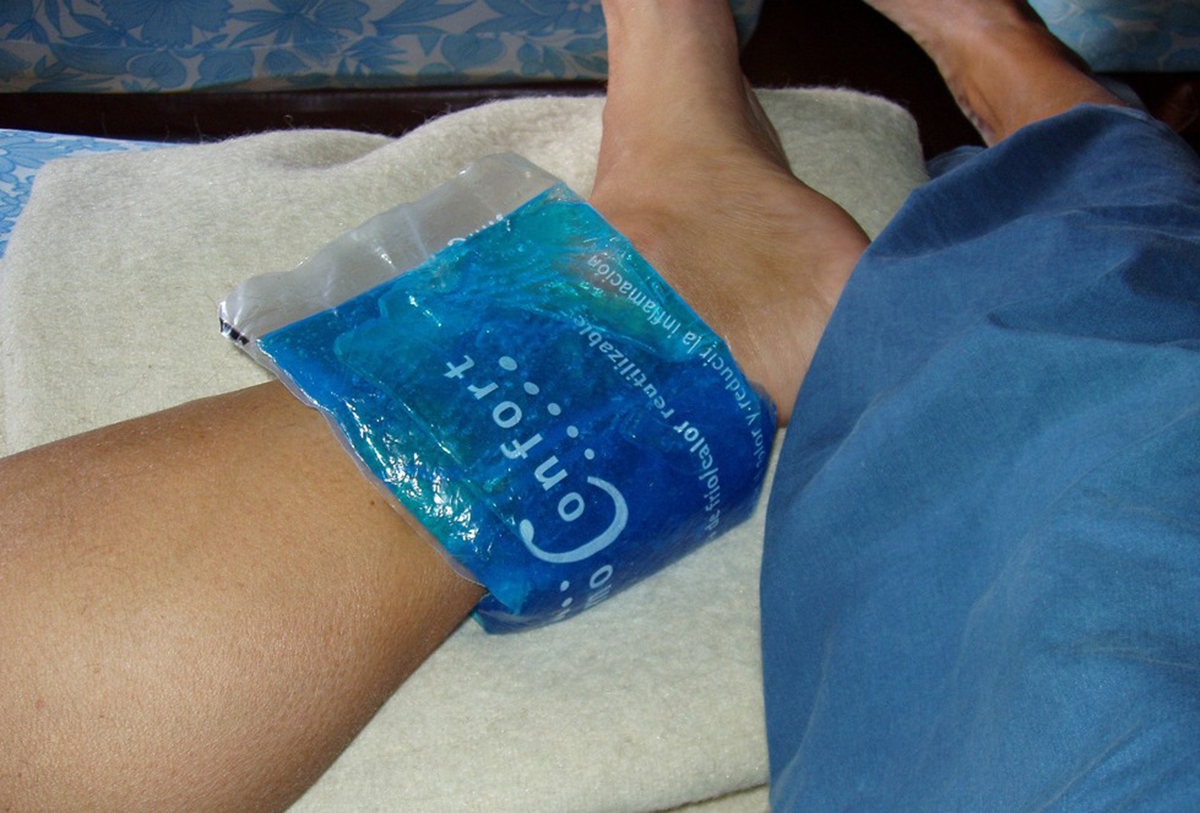Table of Contents
How about some evidence?
How about the results of a trial in Umeå, in Sweden, on 30 patients with debilitating Achilles tendon pain, who on average described their pain as 84 out of 100 - somewhere between 'eye-popping' and 'blinding' on the throb-o-meter? 15 of them were kept away from anti-inflammatory protocols and given an eccentric (negative phase only) exercise program to perform, and ordered to comply with the program unless the pain was actually debilitating. 15 were a control group, given rest, ice, compression, elevation and non-steroidal anti-inflammatories, together with a 'traditional' treatment plan.

'After the 12-week training period,' the report noted, 'all 15 [of the eccentric-movement group] were BACK AT THEIR PRE-INJURY LEVELS WITH FULL RUNNING ACTIVITY.'
These were athletes who had been considering invasive reconstructive surgery and had been unable to run for as much as two years in some cases. Two years later, a follow-up found 14 of the 15 were still running at an athletic level; the 15th had had reconstructive surgery and was still running. They weren't just running through the pain: on average this group now rated their pain at 4 out of 100, or 'what pain?'
The report noted that 'the calf muscle strength on the injured side had increased significantly and did not differ significantly from that of the noninjured side.'
In other words, to all intents and purposes, they were fixed; the very outcome we've learned to consider impossible.
What about the control group?
They got orthotic shoes, physiotherapy, drugs, ice, compression, the whole bit. Surely at least a couple of them got some benefit?
In NO CASE. Not one.
The eccentric loading protocol that restored function to those injured runners isn't very complicated
The report suggests that it can be painful at times, but essentially it consists of medium-volume, subjectively heavy eccentric-only full range of motion training for the injured side.
In the case of Achilles tendon injuries, the runners initially trained by standing with the balls of both feet on a block that allowed them to move through the tendon's full range of motion. They performed calf raise concentrics with their uninjured calf, and lowered themselves through the negative portion of the movement with the injured one. The calf was loaded with the knee straight, and with it bent to hit a different calf muscle and consequently load the tendon differently. The runners did 3 sets of 15 reps of each exercise.
See Also: Tendonitis Elbow Treatment - Golfer's Elbow and Tennis Elbow
This was increased later in the study - when they could do the exercises without pain or discomfort they were told to add a weighted backpack! They were also encouraged to run if the pain wasn't debilitating.
A very different approach to the traditional method, in two ways; one, because it encourages activity and ownership of the recovery process, no doubt with psychological benefits to the athletes (indeed, Håkan Alfredson, one of the study's designers, posited a neurophysiological cause with a psychological component), and two, because it actually works.
- Cluett, Jonathan, 'Tendinitis, General Information About Tendinitis,' Orthopedica.about.com, November 2010
- Håkan Alfredson, Tom Pietilä, Per Jonsson and Ronny Lorentzon, 'Heavy Load Eccentric Calf Muscle Training for the Treatment of Chronic Achilles Tendinosis,' American Journal of Sports Medicine, 1998 26: 30
- McIntyre, Ian, 'Heavy Eccentric Loading For a Recalcitrant Case of Lateral Epicondylosis in a Hockey Player: A Case Report,' Graduate Education and Research, Canadian Memorial Chiropractic College
- Rees, J. D., et al, 'Current Concepts in the Treatment of Tendon Disorders,' Oxford Journal of Rheumatology, 45: 5, pp 508-521
- Mindmap by steadyhealth.com
- Photo courtesy of Stan Dalone & Miran Rijavec by Flickr : www.flickr.com/photos/miran/209038034

